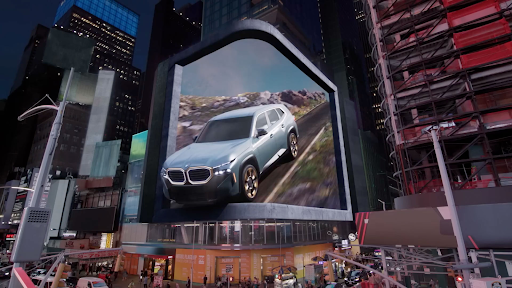ERA OF PDOOH AND AUDIENCE MEASUREMENT
You must have seen several advertisements which vary with time on the same day. For example, you might see a BMW Ad during office hours and Horlicks Ad soon after school hours on the same screen. Programmatic Digital Out-Of-Home (pDOOH) allows you to choose to play different advertisements on the same screen as per your strategy to target audience.

The OOH industry is undergoing a significant digital transformation as media owners are embracing the transition from traditional static billboards to digital formats. Ad buyers, media agencies, media owners, and ad technology vendors are also embracing the transformation.
Programmatic Digital Out-Of-Home (pDOOH), the automated process of buying, selling, and delivering DOOH inventory, is gaining the confidence of marketeers in the Indian OOH industry too. There has been a significant surge in the numbers of pDOOH campaigns executed across Times OOH properties including Airports and Mumbai Metro in this financial year.
Times OOH has been witnessing a positive response to the Digital OOH formats across transit properties. Now with the advent of Programmatic advertising, automated buying and selling has further eased the process to execute DOOH campaigns for the clients by bridging the gap between the Demand-side Platform (DSP) and Supply-side Platform (SSP).
There are multiple categories of brands executing pDOOH campaigns such as E-commerce brands Flipkart, Cleartrip, TATA Cliq, Automobile brands Royal Enfield, Mahindra, and Hyundai; Smartphone brand Oneplus, Vivo, and various others.
Another factor behind the influx of Programmatic DOOH campaigns is the Transparency and Measurability offered by the pDOOH campaigns as Programmatic campaigns provide clients access to the organic automated report of the advertisements’ impressions generated through the Content Management Software installed in the digital screens.
“Post lockdown, the marketing initiatives have become highly targeted and result driven. And with the advent of Programmatic campaigns, the clients have the capability to critically plan and deeply analyse its impact which has driven their confidence in the Indian OOH industry. At our airports and metro properties, we have witnessed an exponential growth of programmatic campaigns by various leading clients, and we are happy to share that there is a certain growth in such campaigns with existing and new clients with the given comfort to execute plans with attributes such as transparency and measurability. DOOH is definitely an Impression Multiplier.”, comments Aman Nanda, Chief Strategy Officer, Times OOH.
Gowri Shanker, co-founder of AdMAVIN has hailed such transformations in the OOH industry. But he also cautioned media and brand agencies about measurability offered by several tech companies. Most of the tech companies depend on mobile data whose penetration in the Indian market is very low and thus doesn’t capture the whole thing. He also explained that AdMAVIN methodology shows traffic and mobile based audience measurement separately and thus is more reliable in terms of audience measurement.